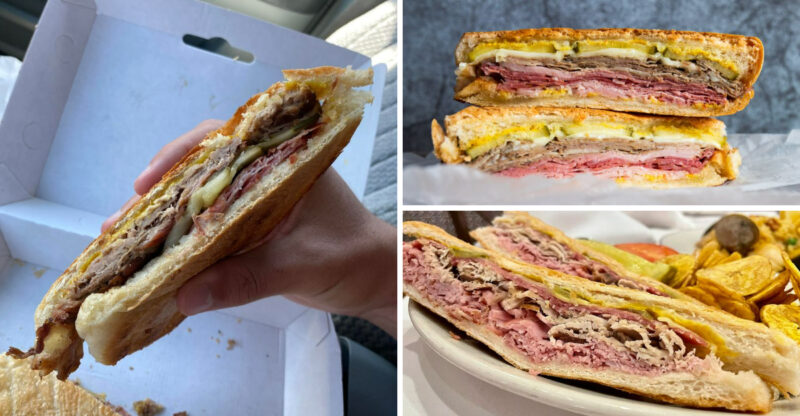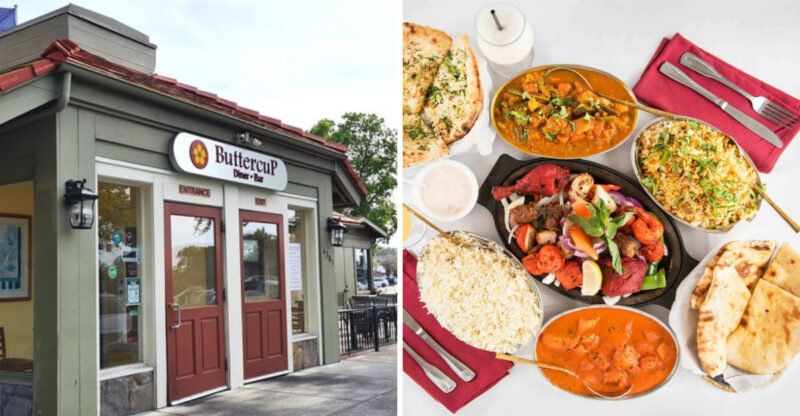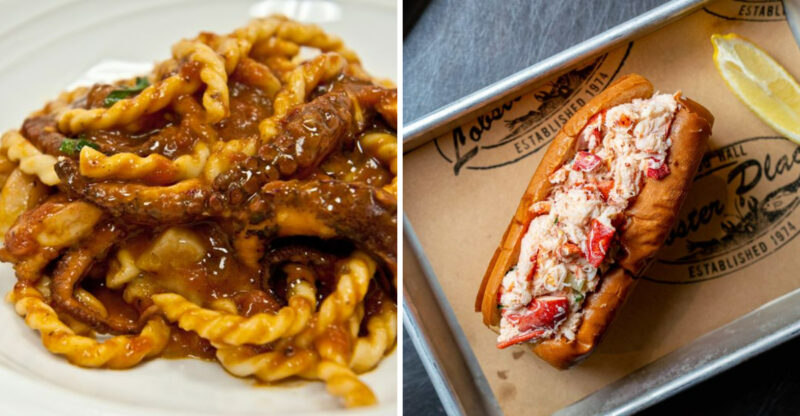23 Forgotten California Dinner Etiquette Traditions That Defined The Swinging Sixties

California in the 1960s was a wild mix of old-school manners and new-age freedom, especially when it came to dinner parties.
Families and friends gathered around tables with rules that seem totally strange today, blending Hollywood glamour with hippie vibes.
These forgotten etiquette traditions show us how Californians ate, talked, and entertained during one of the most colorful decades in history.
1. The Fondue Pot Ceremony
If you hosted a dinner party in 1960s California without a fondue pot, people might have thought you were behind the times. Fondue became the ultimate symbol of sophistication and togetherness. Everyone gathered around one bubbling pot, dipping bread or vegetables with long forks.
The host would light the burner with great ceremony, almost like starting a campfire. Guests were expected to stir carefully and never double-dip. Losing your bread in the cheese was considered bad luck, and some hosts made you kiss the person next to you as a playful penalty.
It was all about sharing space and conversation. The fondue pot turned dinner into an interactive experience that kept everyone engaged for hours.
2. Cocktail Hour Before Every Meal
When dinner guests arrived at a California home in the sixties, the meal never started right away. Hosts always served cocktails first, usually for at least an hour. Martinis, whiskey sours, and gin and tonics were the favorites, served in fancy glassware.
It was considered rude to rush people to the table. The cocktail hour gave everyone time to relax, mingle, and show off their conversational skills. Hosts prepared elaborate snack trays with crackers, cheese, and olives to keep guests satisfied.
Even kids got involved, often serving hors d’oeuvres on silver trays. This tradition made dinners feel more like special events than everyday meals, setting a relaxed yet elegant tone for the evening ahead.
3. Men Serving Women First Always
Did you know that men were expected to serve women at every single meal during the sixties? This wasn’t just at fancy restaurants but in homes too. Men would pull out chairs, pour wine, and make sure women had everything they needed before sitting down themselves.
It was considered the height of good manners. Boys learned this behavior early, practicing at family dinners. Fathers taught sons that being a gentleman meant putting women’s comfort first.
Though this tradition feels old-fashioned now, it was deeply respected back then. Women appreciated the gesture, and men took pride in showing their politeness. Dinner tables became stages where everyone played their expected roles with care and attention.
4. The Jell-O Mold Presentation
How wild is it that Jell-O molds were once the fanciest thing you could serve at a California dinner? These wobbly, colorful creations were considered high art in the sixties. Hosts spent hours carefully layering fruit, vegetables, and sometimes even meat inside gelatin.
Presenting the mold was a big moment. The host would dramatically flip it onto a platter, hoping it would slide out perfectly. Guests would gasp and applaud if it worked, making the host feel like a culinary genius.
Jell-O salads appeared at almost every dinner party. They represented creativity and effort, showing guests you cared enough to make something special and time-consuming just for them.
5. Formal Place Settings With Multiple Forks
It’s hard to imagine now, but California dinner tables in the sixties often had three or four forks per person. Each fork had a specific purpose: salad fork, dinner fork, dessert fork, and sometimes a seafood fork. Knowing which one to use when was a sign of good breeding.
Hosts took pride in setting the table correctly. They followed strict rules about where each piece of silverware should go. Guests who used the wrong fork might feel embarrassed, though polite hosts never pointed it out.
This tradition came from European customs that California embraced enthusiastically. Formal place settings made ordinary dinners feel important and taught children the value of paying attention to details.
6. Thank You Notes Within 24 Hours
When you attended a dinner party in 1960s California, you had homework afterward. Guests were expected to write handwritten thank you notes and mail them within 24 hours. No exceptions, no excuses.
These weren’t quick text messages or emails. People used nice stationary and fountain pens, carefully choosing their words. The notes mentioned specific dishes, conversations, or moments from the evening to show genuine appreciation.
Hosts kept track of who sent notes and who didn’t. Forgetting this step could mean you wouldn’t get invited back. This tradition taught people to express gratitude properly and recognize the effort others put into entertaining them with care and attention.
7. No Elbows On The Table Ever
Are you someone who rests your elbows on the table while eating? In 1960s California, that would have gotten you in serious trouble. Parents drilled this rule into their children from an early age, correcting them constantly.
Keeping elbows off the table showed respect and good upbringing. People believed it made you look more refined and attentive. Even at casual family dinners, this rule was strictly enforced.
Kids who forgot got gentle reminders or sometimes a tap on the arm. The tradition came from the idea that proper posture reflected inner discipline. Today it seems overly strict, but back then, it was just part of being civilized and showing you cared about making a good impression.
8. Hostess Gift Upon Arrival
Though it might seem simple, arriving empty-handed at a California dinner party in the sixties was considered incredibly rude. Guests always brought a hostess gift, usually flowers, wine, or fancy chocolates wrapped beautifully.
The gift wasn’t about its cost but about showing appreciation for the invitation. Hosts would make a show of opening the gift and thanking guests warmly. This exchange set a gracious tone for the entire evening.
Even close friends followed this tradition religiously. It taught people to never take hospitality for granted and to acknowledge the work that went into preparing a meal. The ritual made both guests and hosts feel valued and respected.
9. Waiting For The Hostess To Start Eating
If the hostess hadn’t taken her first bite yet, neither had anyone else at a 1960s California dinner table. This unspoken rule was gospel. Guests would sit with forks in hand, waiting patiently no matter how hungry they were.
The hostess controlled the meal’s pace. She would lift her fork as a signal that everyone could begin eating. Starting before her was seen as disrespectful and greedy.
Kids learned this lesson early, though waiting was torture for them. The tradition showed that meals were about more than just food; they were about community and respect. Everyone moved together, creating a sense of unity that made dinners feel more ceremonial and meaningful.
10. The Lazy Susan Centerpiece
How convenient would it be to have all your condiments spin right to you? California tables in the sixties often featured lazy Susans, those rotating platforms that made sharing easy. They held salt, pepper, butter, and various sauces.
Using the lazy Susan had its own etiquette. You always spun it clockwise and never grabbed something while it was moving. Guests took turns politely, making sure everyone got what they needed.
This simple device reduced the need to constantly ask people to pass things. It symbolized the era’s love of convenience and clever design. Families treasured their lazy Susans, often receiving them as wedding gifts and using them for decades.
11. Dessert Served In The Living Room
When dinner ended at a California home in the sixties, the party moved locations. Dessert was rarely served at the dining table. Instead, hosts invited guests to relocate to the living room for coffee and sweets.
This change of scenery refreshed the evening’s energy. Guests could sit on comfortable sofas and chairs, making conversation more relaxed. Hosts served dessert on small plates with coffee in delicate cups.
The tradition created a natural transition from formal dining to casual socializing. It gave the host time to clear the dinner table privately while guests mingled. Moving rooms made the evening feel like multiple events rather than one long meal.
12. Children Eating At A Separate Table
It’s funny to think about now, but kids and adults rarely ate together at formal California dinners in the sixties. Children had their own separate table, usually smaller and in another room or corner.
Parents believed this let adults have sophisticated conversations without interruption. Kids actually enjoyed it too, feeling independent and free to talk about their own interests. They had simpler food and fewer rules to follow.
The kids’ table became a rite of passage. Getting promoted to the adult table meant you had matured and could handle yourself properly. This separation taught children patience and respect while giving everyone a more enjoyable dining experience.
13. Napkin Placement Rules
Where you put your napkin during a meal might not seem important today, but in 1960s California, it mattered greatly. The napkin went on your lap immediately after sitting down, folded once with the crease toward you.
You used it to dab your mouth gently, never wipe. When leaving the table temporarily, you placed it on your chair, not the table. At meal’s end, you loosely folded it and set it to the left of your plate.
These specific rules separated the well-mannered from the clueless. Parents taught children napkin etiquette as seriously as they taught reading and math, believing it reflected on the entire family’s social standing and refinement.
14. Passing Dishes Counterclockwise
When someone asked you to pass the potatoes at a California dinner in the sixties, you couldn’t just hand them directly. Everything moved counterclockwise around the table, creating an organized flow.
This system prevented confusion and collisions. Everyone knew which direction dishes traveled, making serving smooth and efficient. You never reached across someone or passed things haphazardly.
The counterclockwise rule applied to salt and pepper too, which always traveled together as a pair. Breaking this pattern was considered chaotic and rude. This tradition showed that even simple actions could be refined and thoughtful when everyone followed the same respectful system together.
15. The Formal Dinner Dress Code
If you showed up to a California dinner party in jeans during the sixties, you’d probably be turned away at the door. Dress codes were serious business. Men wore suits and ties, while women wore dresses and heels, even for casual gatherings.
Hosts specified the dress code on invitations, and guests followed it religiously. Looking your best showed respect for your host’s effort. People spent hours getting ready, treating dinners like important social events.
Kids dressed up too, wearing their Sunday best. The tradition made everyone feel special and elevated ordinary meals into memorable occasions. Getting dressed up became part of the fun and anticipation of the evening.
16. No Discussing Money Or Politics
Are there topics you avoid at family dinners today? In 1960s California, two subjects were absolutely forbidden: money and politics. Bringing up either could ruin the entire evening’s atmosphere.
Hosts worked hard to steer conversations toward pleasant, neutral topics like travel, hobbies, or entertainment. If someone mentioned finances or political views, others would quickly change the subject. The goal was harmony and enjoyment, not debate or discomfort.
This rule seems impossible now, especially during the turbulent sixties when so much was changing. But dinner tables remained neutral zones where people escaped controversy. Keeping conversations light preserved friendships and made meals relaxing rather than stressful.
17. The Cheese And Crackers Course
How strange would it be to have a whole separate course just for cheese? California dinner parties in the sixties often included this European-inspired tradition. After the main meal but before dessert, hosts served cheese boards with crackers.
Guests would sample different varieties, discussing flavors and textures. This pause between courses gave everyone time to digest and continue conversations. The cheese course showed sophistication and worldliness.
Hosts carefully selected cheese assortments, arranging them artfully on wooden boards. Providing cheese knives and specialized crackers demonstrated attention to detail. This tradition made dinners longer and more luxurious, turning meals into extended social experiences that lasted well into the night.
18. Smoking Between Courses
It’s shocking to imagine now, but smoking during dinner was not only acceptable but expected in 1960s California. Hosts placed ashtrays at every seat, and guests lit up between courses without asking permission.
The smoking break gave people something to do while waiting for the next dish. Men and women both participated, viewing cigarettes as sophisticated accessories. Some hosts even offered guests cigarettes from fancy cases.
Nobody worried about health effects or secondhand smoke back then. Cigarettes were glamorous, associated with movie stars and elegance. This tradition seems unthinkable today, but it perfectly captured the sixties attitude toward smoking as a normal, even classy, part of social life.
19. Standing When Women Enter Or Leave
When a woman entered or left the dining room during a 1960s California dinner, every man at the table stood up. This gesture happened automatically, without anyone needing to announce it.
Boys learned this behavior young, practicing until it became second nature. Standing showed respect and acknowledgment of a woman’s presence. Men remained standing until the woman sat down or left the room completely.
Women expected this courtesy and noticed when men forgot. The tradition reinforced gender roles that seem outdated now but were deeply ingrained then. It made dinners feel formal and ceremonial, with everyone constantly aware of social expectations and proper behavior.
20. The Finger Bowl Ritual
If you’ve never seen a finger bowl, you’d be confused at a fancy 1960s California dinner. These small bowls of water with lemon slices appeared after messy courses like lobster or ribs.
Guests dipped their fingertips in the water, gently washing them before patting dry with their napkins. Using the finger bowl incorrectly, like drinking from it, marked you as unsophisticated. Proper technique mattered greatly.
This ritual came from European aristocratic traditions that California society embraced. Finger bowls represented the height of refinement and attention to detail. They showed that hosts thought of everything, even providing elegant solutions for practical problems during multi-course meals.
21. Conversation Including Everyone Equally
Though it sounds simple, California hosts in the sixties worked hard to include everyone in dinner conversations. Nobody was allowed to dominate discussions or leave anyone out.
Skilled hosts directed questions to quieter guests, making sure everyone contributed. Side conversations between just two people were discouraged. The ideal was one unified discussion that flowed around the entire table.
This tradition required social awareness and effort. Guests who monopolized conversations were considered rude, while those who drew others out were praised. Creating inclusive discussions made everyone feel valued and turned dinners into true community experiences where every voice mattered equally.
22. Clearing Plates Only When Everyone Finished
How would you feel if someone grabbed your plate while you were still eating? In 1960s California, hosts never cleared plates until absolutely everyone had finished eating.
Removing plates too early made slower eaters feel rushed and uncomfortable. Good hosts watched carefully, waiting for the last person to set down their fork. Only then would clearing begin, often with the host standing first as a signal.
This patience showed consideration for guests’ different eating speeds. It prevented anyone from feeling pressured or embarrassed. The tradition reinforced that meals were about togetherness, not efficiency, and everyone deserved to finish at their own comfortable pace.
23. The After-Dinner Brandy Tradition
When dinner ended at a California home in the sixties, the evening wasn’t over. Men often retired to a separate room for brandy and cigars while women gathered elsewhere for coffee and conversation.
This gender separation seems strange now, but it was standard practice. Men discussed business and sports while women talked about family and social matters. Each group enjoyed their own space and topics.
The brandy ritual gave men time to digest and relax. They swirled expensive liquor in special snifters, savoring the flavors. This tradition extended evenings and created distinct phases, making dinner parties feel like elaborate, carefully orchestrated social performances that everyone understood and appreciated.






